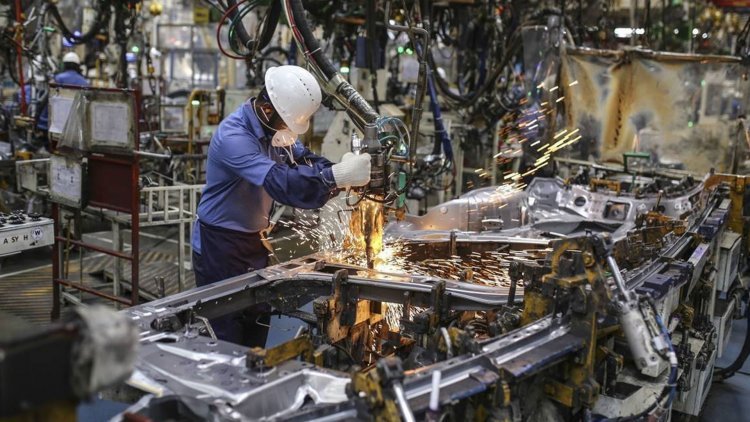India's industrial aspirations are boosted by Sino-Western tensions, says Andy Mukherjee
Investor interest is growing in the idea of using India as a risk-mitigation strategy to protect against having all widget production done in China, which is helping to support exorbitant values.

Around the time of the Diwali holiday, which is the peak period for domestic consumption, Indian companies disclose their September quarter earnings. It should come as no surprise that at this point analysts assess the reality of the nation's more than 1 billion consumers: How many of them bought a phone, ordered new paint, or took out a home loan? This year, the question of Dixon's performance is more important.
Even a year ago, companies like Dixon Technologies (India) Ltd., which manufactures LED TVs for Samsung Electronics Co., or Amber Enterprises India Ltd., which supplies LG Electronics Inc. with air conditioning parts, were still very obscure. However, there is currently growing interest in domestic companies that have the potential to one day grow to be just as significant and significant as the contract manufacturing behemoth Flex Ltd., previously Flextronics.
Geopolitics plays a significant role in explaining that optimism. A wake-up call was provided by the brief stock market crash in China that followed President Xi Jinping's election to an unprecedented third term. Multinational corporations require a backup location for manufacturing technology as Beijing, led by its strongman leader, threatens to break away from the economic and political orbit of the West. Who has a larger labour pool than India when it comes to implementing a China+1 strategy?
The order flow is being observed by the stock market. Dixon's market worth has increased sixfold in two and a half years and is now greater than $3 billion. Acer Inc., a Taiwanese PC manufacturer, disclosed a collaboration with the Indian business last year. Dixon, which has its headquarters in the Noida neighbourhood of New Delhi, is already producing monitors for Dell Inc. and will soon begin producing Android-based smart TVs thanks to a sublicense from Alphabet Inc. In the September quarter, revenue increased by 38% and profit by 23% over the prior year.
Analysts have a bright outlook. The Mumbai-based brokerage Nirmal Bang anticipates compounded yearly profit increase of at least 52% between 2022 and 2025. The three-year projected profits growth rate for Jefferies Financial Group Inc. is 63 percent yearly. The researchers claim that they "see Dixon as a structural play on indigenization."
Investor interest is growing in the idea of using India as a risk-mitigation strategy—a hedge against producing all widgets in China—which is helping to support exorbitant values. Currently, Indian stocks are trading at a premium of three standard deviations over those from emerging markets. But there's a lot of trepidation. A few of the other investment themes are beginning to look worn down, at least momentarily, with the exception of domestic banks, whose asset quality and margins have improved.
The Reserve Bank of India may be close to pausing its interest-rate cycle, and the worst of the inflation increase is likely over. Price pressures, however, are still very high. Quarterly consumption numbers had been falling 1% yearly over the previous three years heading into the festival season. The local division of Unilever Plc has its lowest gross margin in a number of years. India is well-known worldwide for its software services sector, which is currently facing sluggish demand from European customers and high employee churn domestically.
Meanwhile, Dixon qualifies for government aid from India under five distinct production-linked incentive schemes.
Prime Minister Narendra Modi's five-year, $24 billion industrial strategy push is a pricey wager on manufacturing for a resource-constrained country traumatised by the pandemic. The need for that money in the areas of health, education, and an urban infrastructure in need of repair due to extreme weather disasters was more pressing. In its own socialist past, New Delhi tried increasing import taxes to give the "Make in India" programme a protectionist edge, but the results were devastating.
Dixon wouldn't mind being viewed as a fictitious national champion. The stock market won't either. However, CEOs of Fortune 500 businesses hold the true power to influence events in favour of the country with the second-highest population. If China+1 is the real Diwali theme in India, it has more to do with Xi and his deteriorating relations with the West than it does with Modi and his policies.




 admin
admin 




















